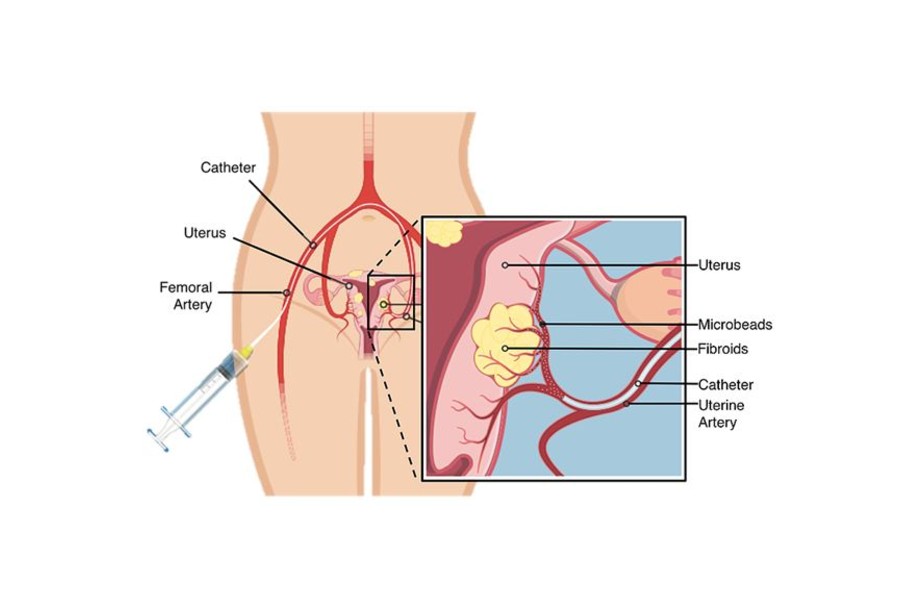
Uterine artery embolization (UAE) is a minimally invasive treatment for uterine fibroids, noncancerous growths in the uterus. In uterine artery embolization (uterine fibroid embolization) a doctor uses a slender, flexible tube (catheter) to inject small particles (embolic agents) into the uterine arteries, which supply blood to the fibroids and uterus. The goal is to block the fibroid blood vessels, starving the fibroids and causing them to shrink and die.
UFE Procedure: a small tube called a catheter is guided through the blood vessels to reach the fibroids. Micro-sized beads are injected through the catheter into the fibroid, blocking the fibroid's blood supply, causing it to shrink.


